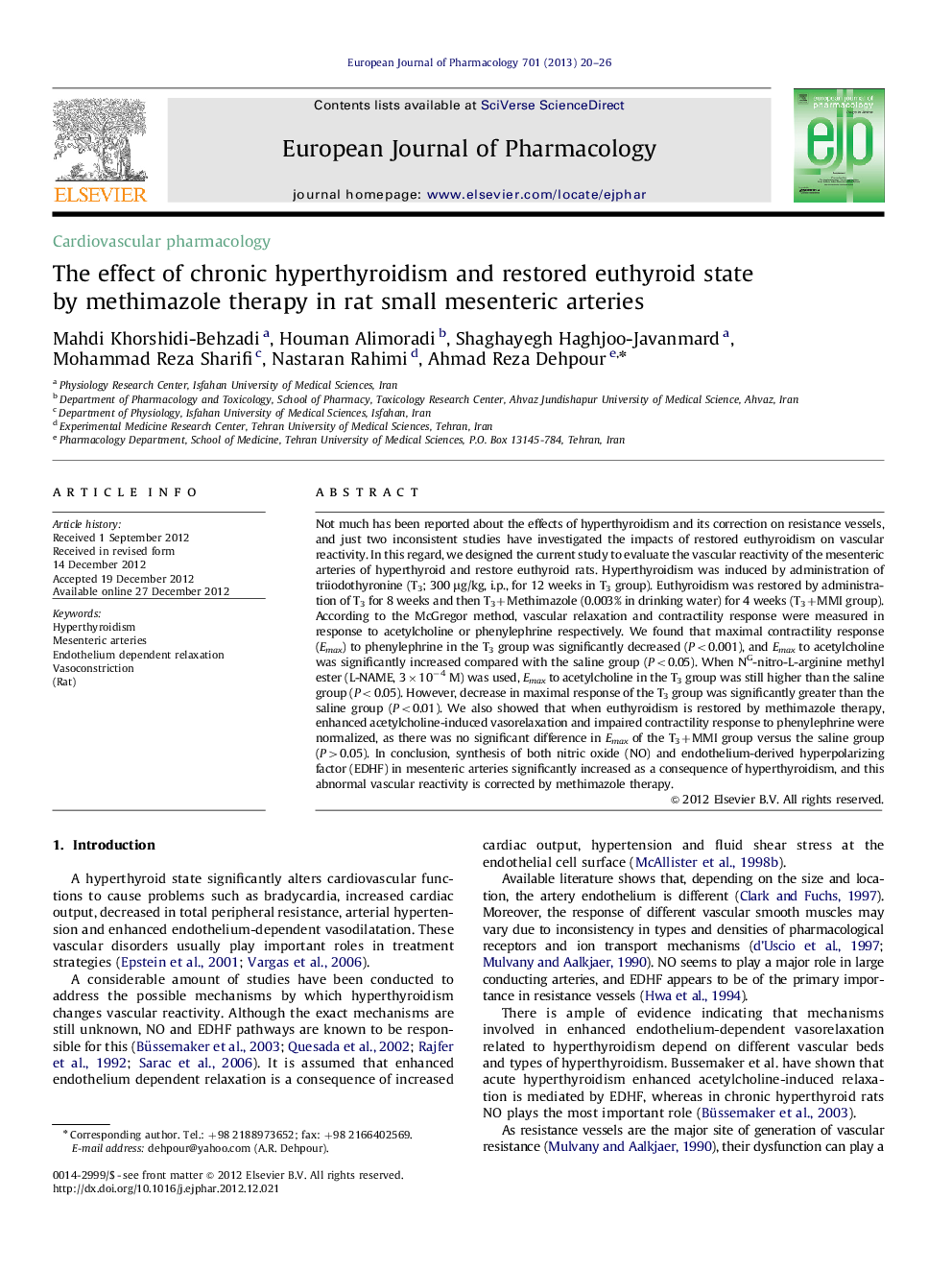| Article ID | Journal | Published Year | Pages | File Type |
|---|---|---|---|---|
| 5828803 | European Journal of Pharmacology | 2013 | 7 Pages |
Abstract
Not much has been reported about the effects of hyperthyroidism and its correction on resistance vessels, and just two inconsistent studies have investigated the impacts of restored euthyroidism on vascular reactivity. In this regard, we designed the current study to evaluate the vascular reactivity of the mesenteric arteries of hyperthyroid and restore euthyroid rats. Hyperthyroidism was induced by administration of triiodothyronine (T3; 300 μg/kg, i.p., for 12 weeks in T3 group). Euthyroidism was restored by administration of T3 for 8 weeks and then T3+Methimazole (0.003% in drinking water) for 4 weeks (T3+MMI group). According to the McGregor method, vascular relaxation and contractility response were measured in response to acetylcholine or phenylephrine respectively. We found that maximal contractility response (Emax) to phenylephrine in the T3 group was significantly decreased (P<0.001), and Emax to acetylcholine was significantly increased compared with the saline group (P<0.05). When NG-nitro-L-arginine methyl ester (L-NAME, 3Ã10â4 M) was used, Emax to acetylcholine in the T3 group was still higher than the saline group (P<0.05). However, decrease in maximal response of the T3 group was significantly greater than the saline group (P<0.01). We also showed that when euthyroidism is restored by methimazole therapy, enhanced acetylcholine-induced vasorelaxation and impaired contractility response to phenylephrine were normalized, as there was no significant difference in Emax of the T3+MMI group versus the saline group (P>0.05). In conclusion, synthesis of both nitric oxide (NO) and endothelium-derived hyperpolarizing factor (EDHF) in mesenteric arteries significantly increased as a consequence of hyperthyroidism, and this abnormal vascular reactivity is corrected by methimazole therapy.
Related Topics
Life Sciences
Neuroscience
Cellular and Molecular Neuroscience
Authors
Mahdi Khorshidi-Behzadi, Houman Alimoradi, Shaghayegh Haghjoo-Javanmard, Mohammad Reza Sharifi, Nastaran Rahimi, Ahmad Reza Dehpour,
